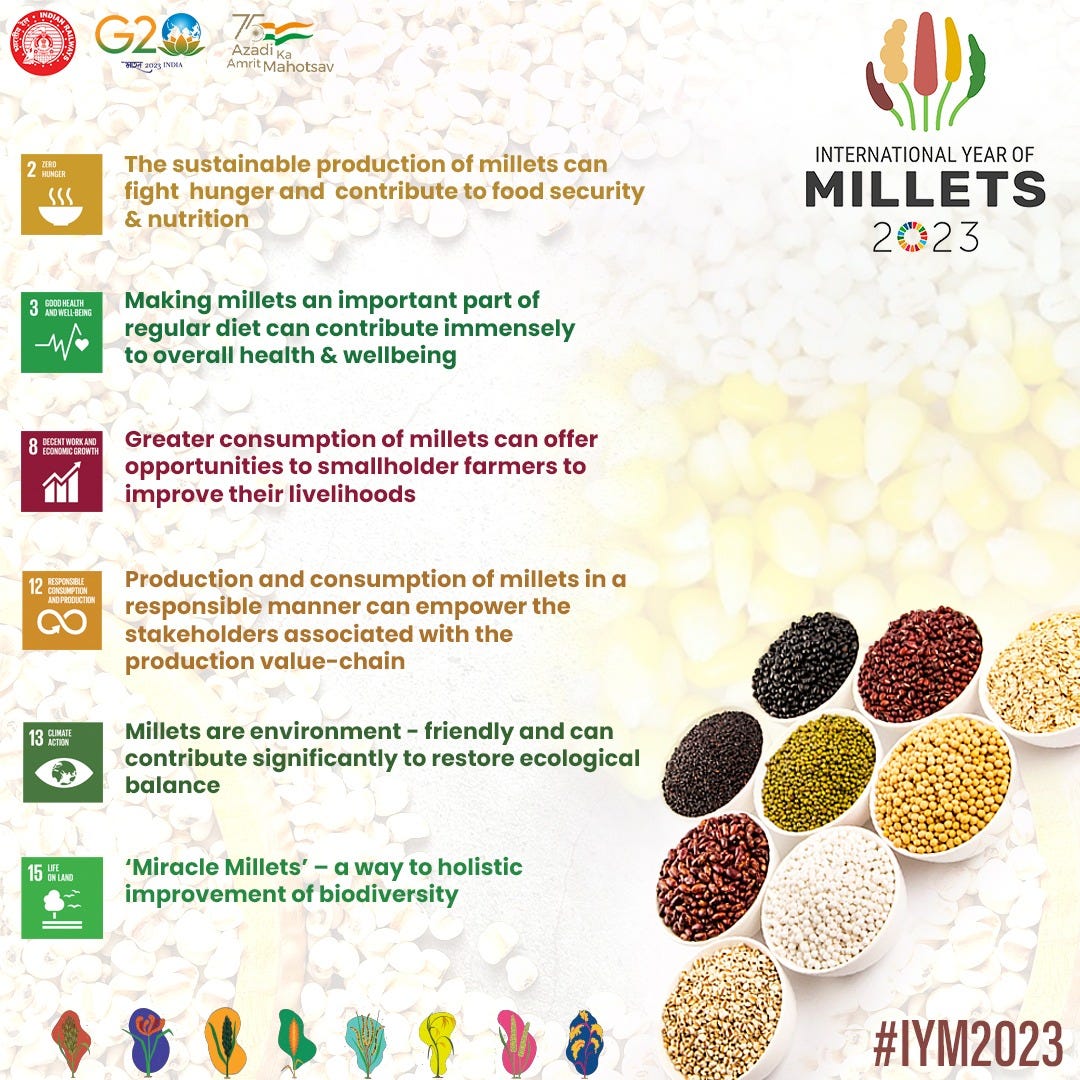The Year Of The Millet And Why It Matters
Millets are not only climate resilient, they also offer great nutritional value and health benefits.
The UN has declared 2023 the International Year of the Millet. This followed a proposal by the Indian government, which, for the last few years, has been advocating an increased role for millets in our agriculture and in our diets.
The promotion of millet, in my humble but firm view, is a crucial initiative. One of the most difficult challenges we face is feeding a growing population in a world increasingly impacted by climate change.

By 2050, the world’s population is expected to exceed 10 billion. We are currently at around 8 billion. The issue at hand will be to feed an additional 2 billion people. So, we will require more food than we do now.
We will need more food and more nutritious food because the average global diet today is not particularly healthy.
The complexity is just beginning there. We need to grow more food on less land than we do today because the growing population will need more land for purposes other than growing food.
That’s not the only reason we need to grow more food on less land. We must also do that to bring climate change to a grinding halt. About a third of global greenhouse gas emissions come from our food systems, a catch-all phrase for all activities that go into food production. 70% of those emissions come from agriculture and “associated land use and land-use change activities”
Does the challenge end there? No. Another issue is that when temperatures rise, major crop yields will decline. In fact, they already have for three of our most important crops — wheat, maize, and rice. Just these three crops provide half of the total calories consumed globally.
So let’s quickly recap. Future food needs to be more nutritious, more climate resilient, less harmful to the climate and take up less land.
Can the millet be all of the above? To a considerable extent, yes.
But, as with all things, they can’t be the one-stop solution. We can’t stop growing all other kinds of grain and switch entirely to millet. Even if that were possible, it would not be desirable.
Millets could play a key role in addressing many of the challenges we face and will face in the future.
Let's see how.
They are incredibly climate resilient. They can withstand extreme temperatures (as high as 46 degrees Celsius), droughts and floods. These properties make them well-suited for our future, where severe weather will be as common as hateful uncles are in India.
Millets contribute far less to climate change and environmental damage than wheat and rice. Greenhouse gas emissions from the growing of millets are substantially lower.
They are also significantly more water efficient. For example, they use just about one-third of the water that the rice crop does.
Growing millets, at the moment, requires no or very little application of fertilizers and pesticides. Of course, that may change as they are produced at larger scales, and we want greater yields.
The third challenge outlined above was nutrition. Millets are a lot more nutrient dense than wheat and rice. They are rich in micronutrients like iron, zinc, calcium and iodine. They are high in fibre content and are gluten-free.
So, millets are an excellent weapon that one can deploy to prevent and combat diseases like diabetes, as well as to improve cardiovascular health.
The millet can help us solve multiple problems. But, challenges remain. Yields of millets are lower than those of wheat and rice. Also, millets don’t bind as easily as, say, wheat does, so turning them into breads, for instance, is more of a challenge.
Plus, our attitudes towards millets need to change so that they can once again become part of our diets. They were a crucial part of many diets worldwide not so long ago. Then came the green revolution, but that is also another story for another day.


Just as governments invested in the enabling infrastructure during the green revolution to promote, rather aggressively, both the growing and consumption of wheat and rice, they could, potentially, do something similar for the promotion of millets, which, unlike wheat and rice, are a win-win on several counts.
One would hope that the increased focus on millets this year can go a long way in promoting millets, much like when the “year of quinoa” in 2013 led to a sharp increase in demand for quinoa and its production.
Try this
For those so inclined, you could have a crack at this Ragi (Finger Millet) pancake recipe this weekend. The looks of it are rather fluffy and promising.





Very well comprehended article